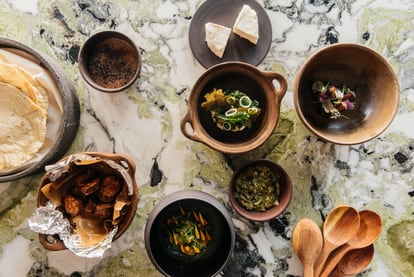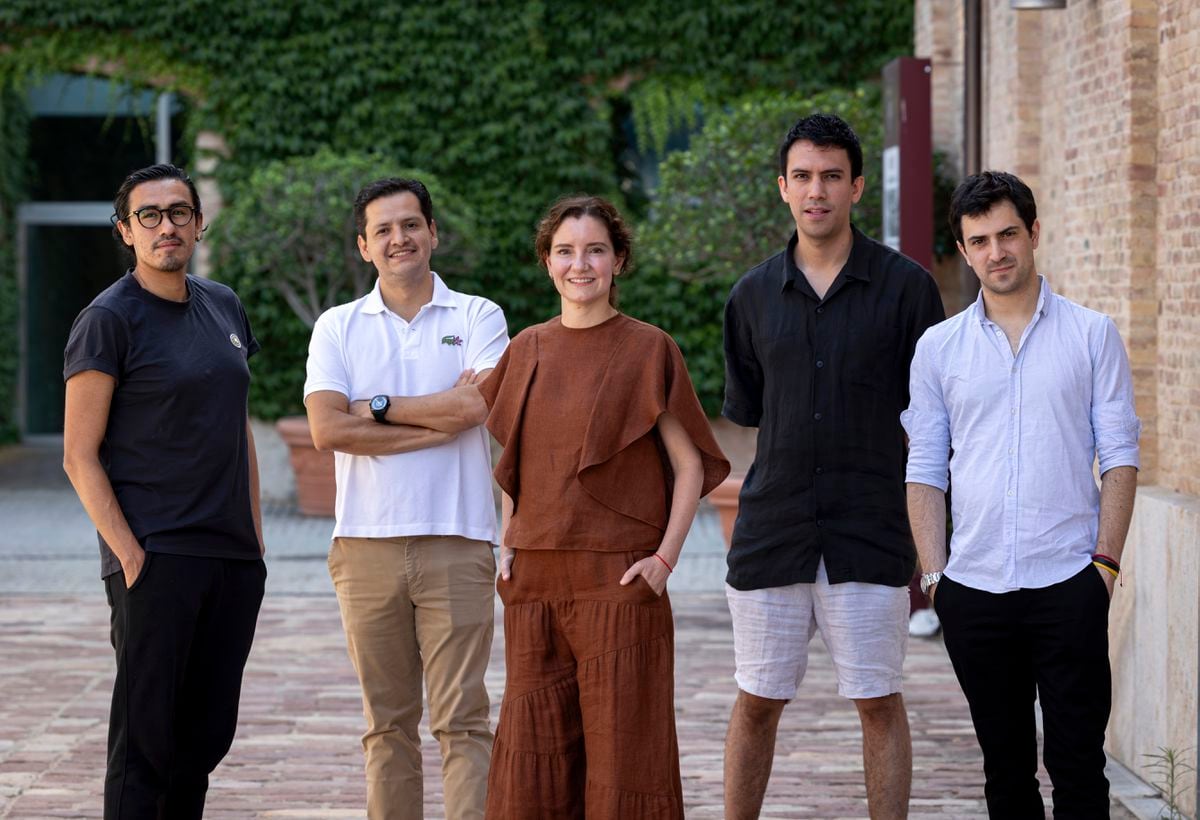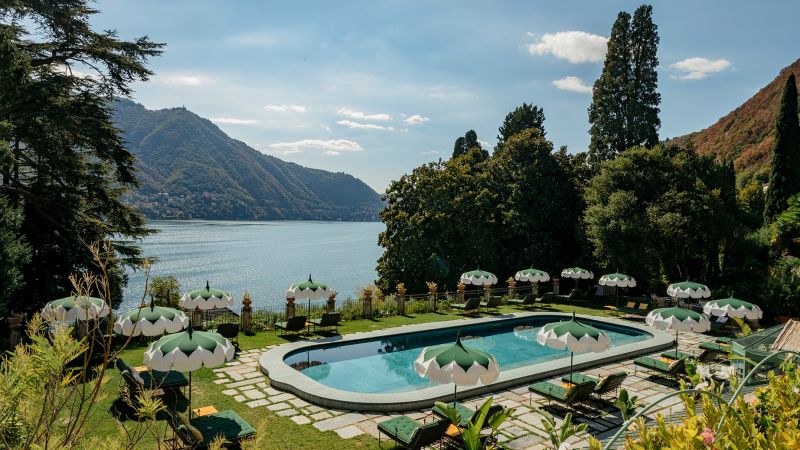There are only four cuisines in the entire world that have been declared Intangible Cultural Heritage of Humanity. Mexican delicacies is not only just one of them, but it was the very first to reach this designation from Unesco. Its hues, flavors and textures are component of a heritage spanning 1000’s of years in which cooking is an ingredient of identity. Worldwide recognition arrived in 2010, regardless of the fact that it was only 20 years ago that culinary educational institutions commenced to work in the country. Jorge Vallejo, chef at Quintonil recalls: “The turning position was professionalization, and it was a domino result due to the fact the gurus commenced to demand from customers [other] industry experts about them and that was also when there commenced to be experts in the products and solutions and the appliances we use in the provider,” he claims.
EL PAÍS has introduced alongside one another five of the best Mexican cooks in a conversation about the place of Mexican cuisine in the culinary planet. They all participated at The World’s 50 Greatest Places to eat gala, held in Valencia final 7 days, and three of them are head cooks at establishments provided on that list. Jorge Vallejo (Quintonil), Elena Reygadas (Rosetta), Santiago Lastra (KOL), Jesús Durón (government chef at Enrique Olvera’s Pujol cafe) and Gustavo Garnica (from Cosme cafe, also owned by Olvera) sat down to discuss the route their “dishes” have taken, which nowadays are sampled as haute delicacies all around the planet. They ended up accompanied by Valentina Ortiz Monasterio, president of Latin America’s 50 Most effective Restaurants. There were a lot of points in typical: from the satisfaction in their Mexicanness and the exclusivity of some regional make, to the conviction of the good quality and great importance of the producers.
Santiago Lastra is the chef at the Michelin-starred London cafe KOL. He has cooked in 30 nations, but usually comes back to his possess, as he himself says. He believes the growth started off when chefs started to glimpse inward and “value what we have.” “Over the several years, we recognized that the sensible factor to do was Mexican delicacies,” Vallejo provides. “We experienced to look exterior [Mexico] to benefit what we had inside,” agrees Jesús Durón, executive chef at Pujol, a cafe that in this version dropped from eighth to 13th spot in the checklist of the World’s 50 Best Places to eat. And then they get begun on chatting about make and preparing dishes. For Elena Reygadas, named the most effective Latin American cook, uniqueness has been essential: “You can eat a lobster in several sites in the globe, but not escamoles (ant larvae). It is a rural cuisine and it is the most gorgeous. The tamale is a deserving dish, and we have distinguished it from other expensive solutions,” she says. “We have a assortment of hues that doesn’t exist in other cuisines and all the layers of flavor in 1 bite,” adds Vallejo, who details out that only Asian cuisine will come close to that diversity.
For Gustavo Garnica, chef at Cosme, the cafe that Enrique Olvera owns in New York, Mexican cooking “is an honest delicacies that shows the complexity of basic items.” And between people straightforward items are tortillas and the corn from which they are built. It is reported that young children in Mexico scent them to check if they are built from excellent corn. And that at some birthday events, coming of age is celebrated with a mole de guayaba at the ask for of the birthday boy or female. Whilst they imagine that “the earth matches in a tortilla,” as Gustavo Garnica states, they have located that when they enhance the top quality of their raw products, “demand grows since folks realize that it is great,” as Durón clarifies.
/cloudfront-eu-central-1.images.arcpublishing.com/prisa/D53QL3BBRNFNDKBUS7GMHARDXM.JPG)
Despite the fact that they are aware that there was a time when the earth believed Mexican delicacies was constrained to tacos, they maintain no grudge in opposition to all those who have opened doors for them, even with Tex-Mex: “There is a Mexican restaurant called Lupita in every single town. They are Tex-Mex, and we have a excellent name, they appear at us with passion and have opened a further door,” says Durón, who, in any case, points out that excellent has been what has led them to the spot they occupy in world delicacies. “The textures of the tortilla improve depending on how the corn dries, and these are information that flip a little something classic [into] one thing sophisticated,” he clarifies.
They are all bursting with enthusiasm and delight. And they acknowledge, almost as just one, that “in the end, we considered it.” “We are chefs from different generations, but knowledgeable of our culinary background. We respect it, but we also complement it by proposing things that bolster it,” argues Elena Reygadas. The truth is that there is a whole lot of camaraderie in between them. “We are united and very pleased of our cuisine,” states Santiago Lastra.

Mexican cooks have not only succeeded overseas. They have also been prophets in their own land and, now, they are cultural ambassadors. “They are the large stars of the instant,” claims Valentina Ortiz Monasterio, president of Latin America’s 50 Very best Restaurants. And none of them has overlooked all those who give them with all the raw products that make their dishes so various, authentic, and unique. “We have to set the countryside on the pedestal it deserves,” suggests Santiago Lastra, who travels to Mexico from London from time to time to carry on getting how numerous herbs are used in the most distant elements of the region. “They are the serious heroes,” he provides. Jesús Durón details out a thing else: the professionalization of the kitchen has also meant the professionalization of producers of elements these kinds of as natural and organic corn, who have found an outlet in their household region and have overlooked about wanting to go to the United States to go after the American dream.
None of them wishes to die of accomplishment. And they function for it. “We have to train small children so that they know how to cultivate generate and have time to go back again to producing jams,” Durón proposes. “We are all accountable for using treatment of our delicacies so that it is not shed, and that just about every technology increases it,” adds Gustavo Garnica. The chef of Quintonil, the ninth-most effective restaurant in the world, provides a further component: “Gastronomy is a transformational factor,” he claims. And it’s not just about sustainability and regard for the ecosystem, but also about enhancing ingesting behaviors. And he sums up the complete conversation in a single sentence: “There’s a starvation for Mexican cuisine.”
Signal up for our weekly publication to get a lot more English-language information coverage from EL PAÍS Usa Edition






More Stories
Allium extracts are elevating world-wide cuisine
Colette Rossant, 91, Dies Gave French Cuisine a Worldwide Flourish
World Cuisines That You Need to Test In Italy